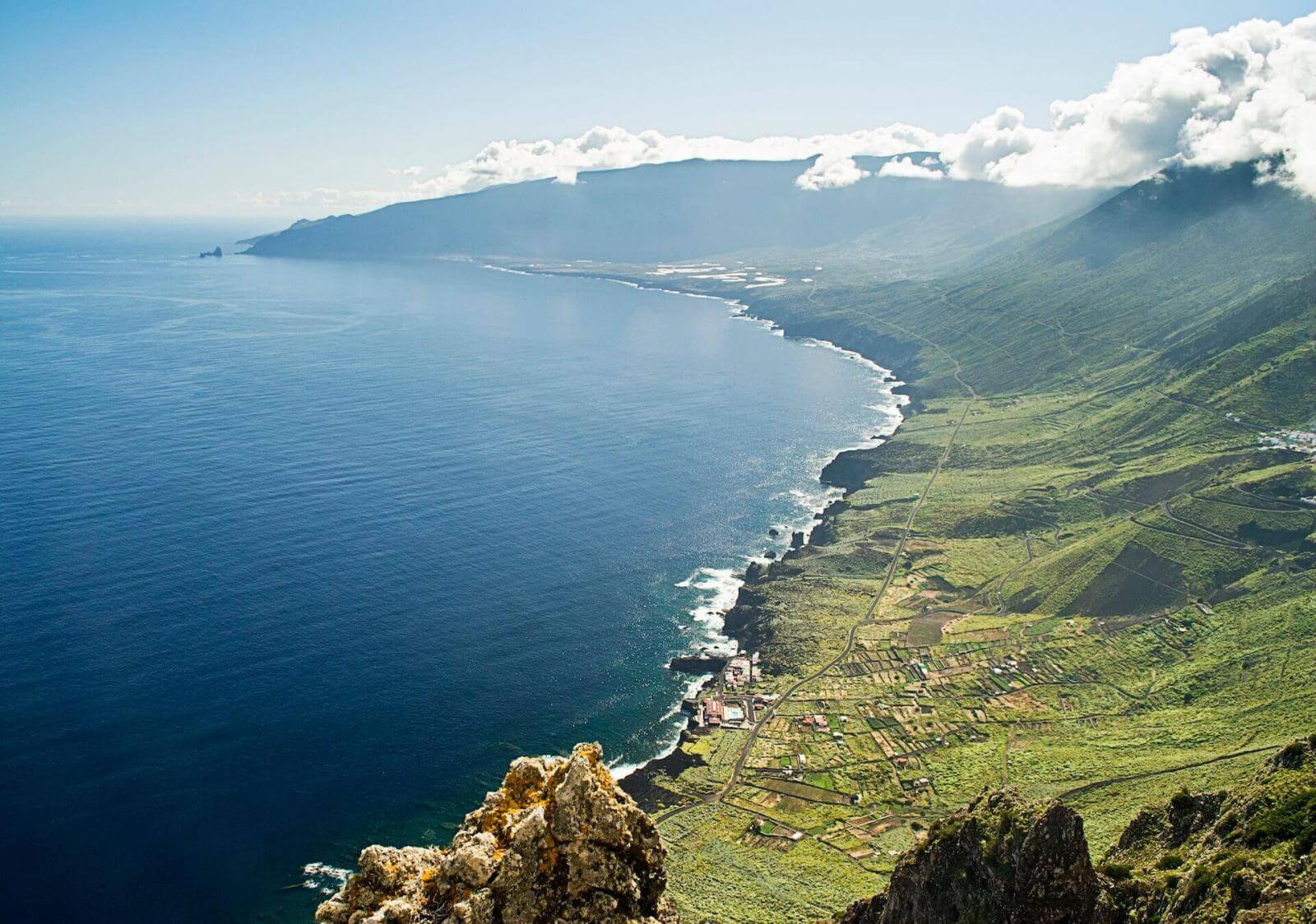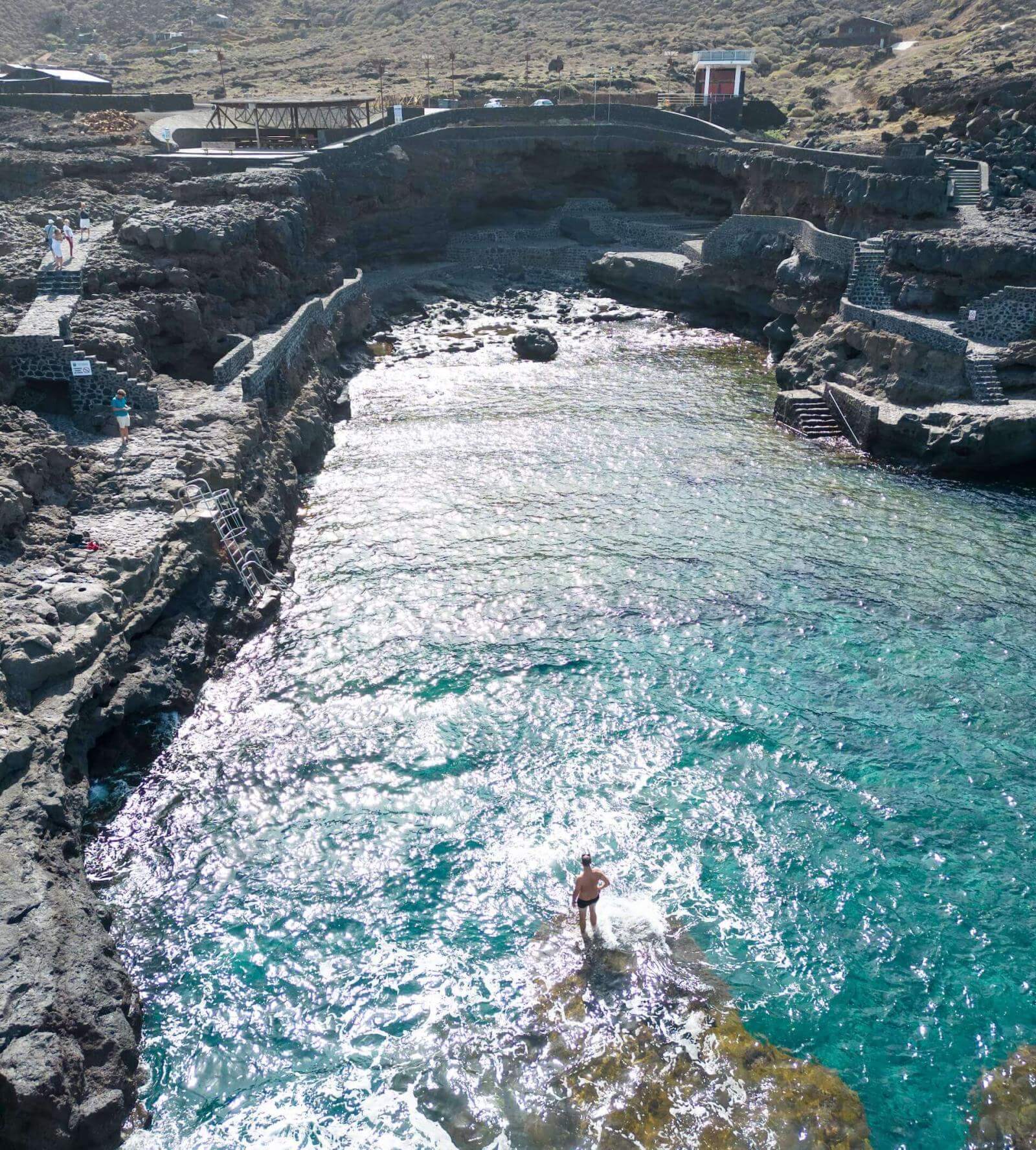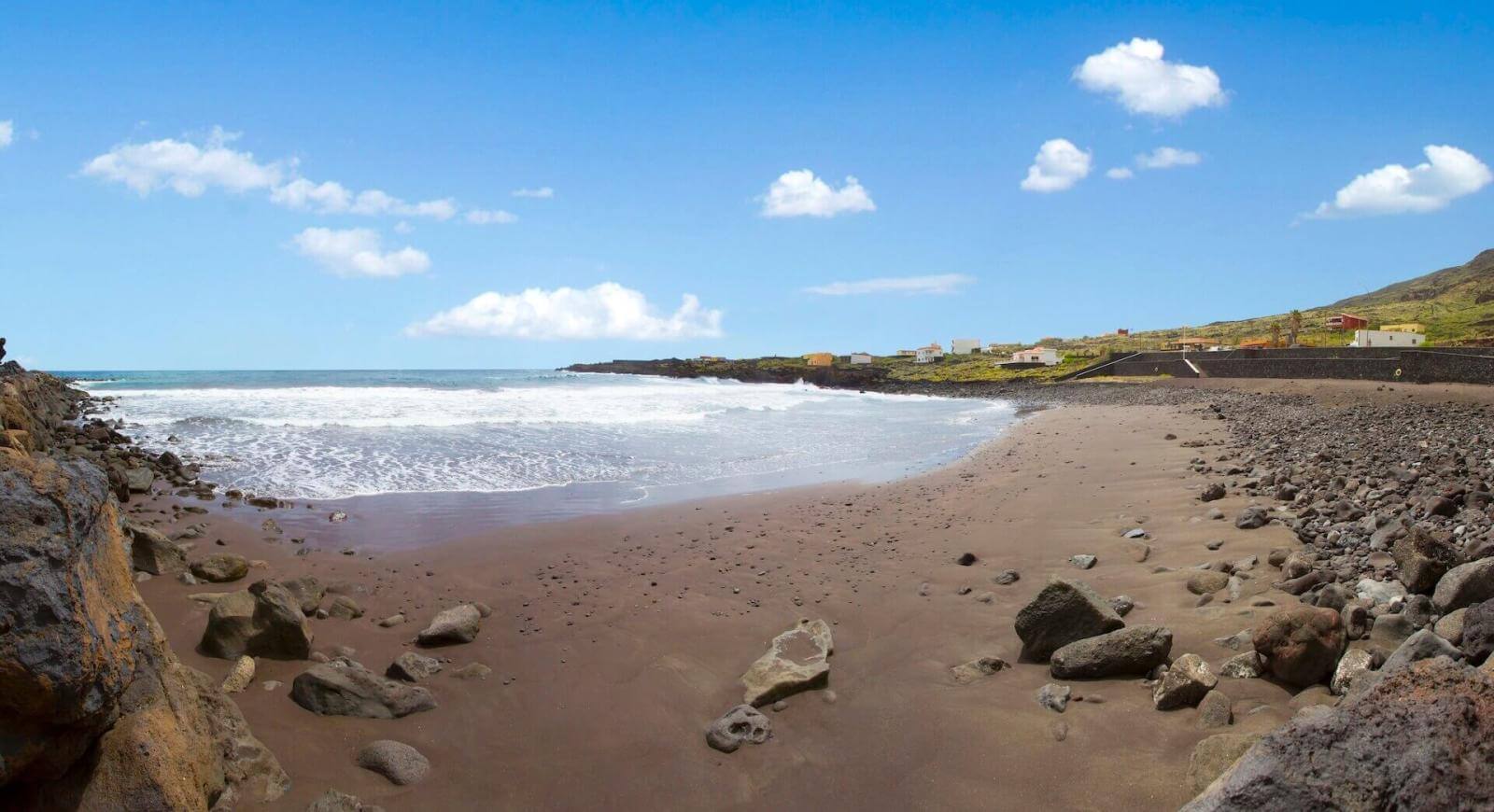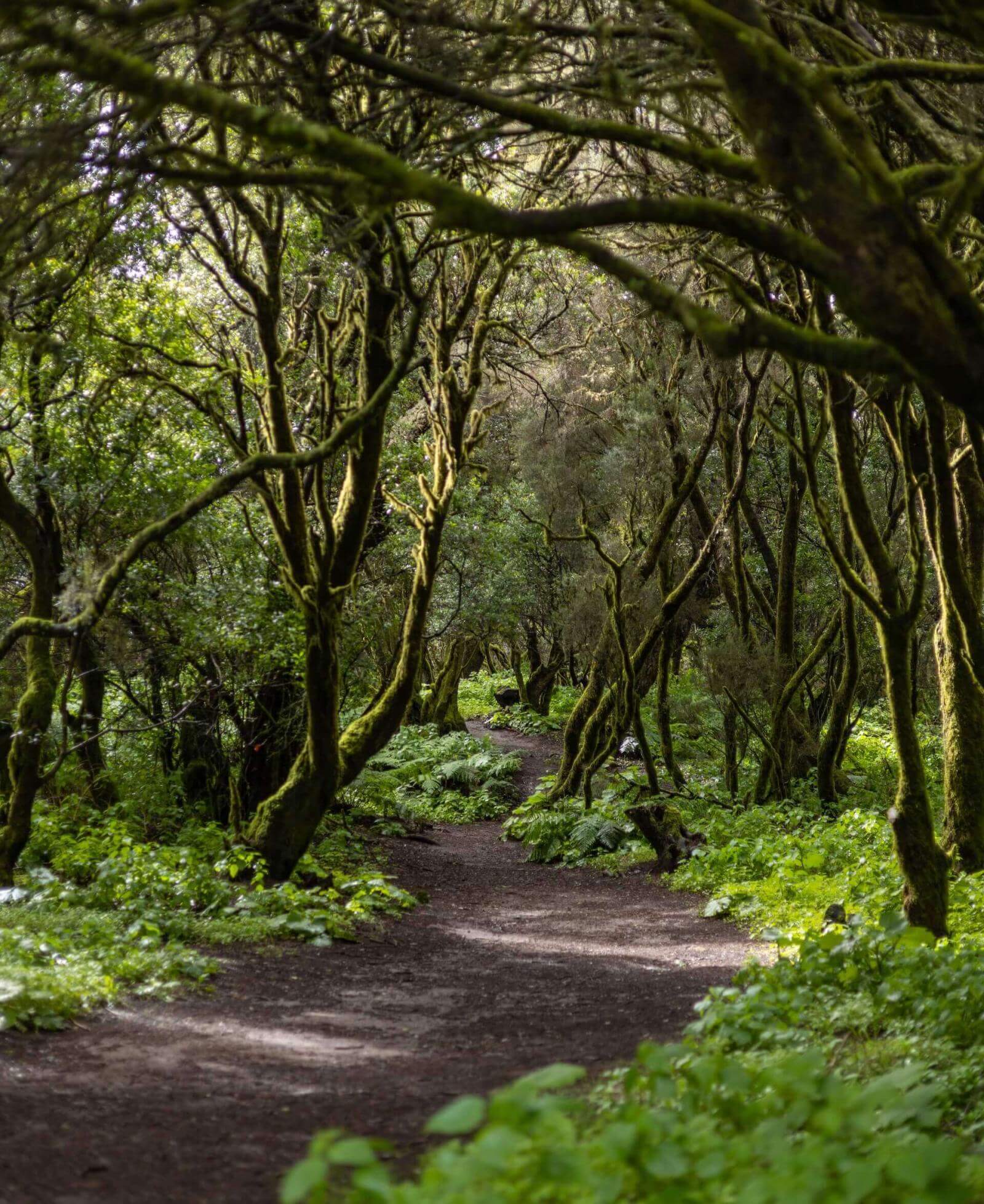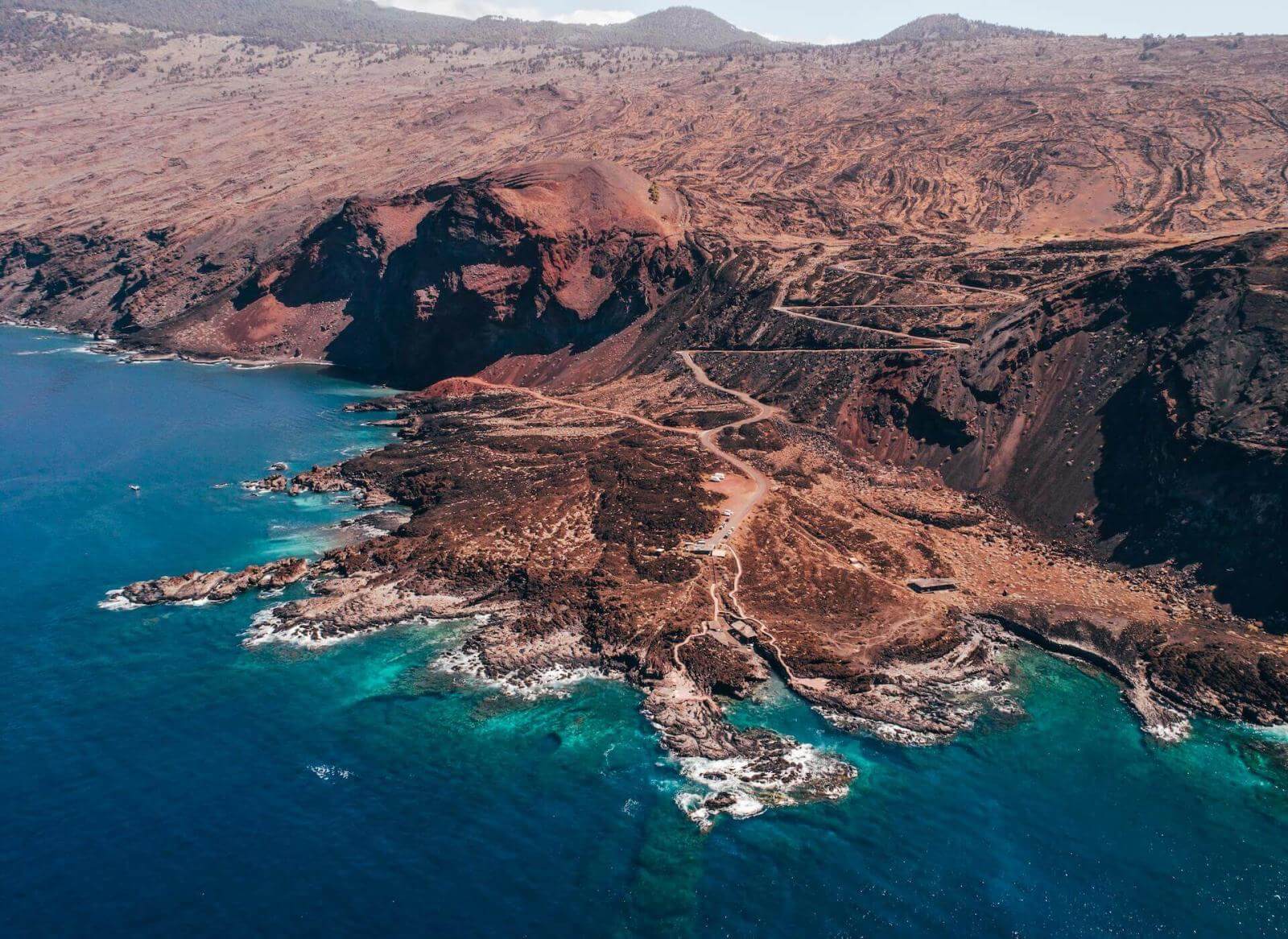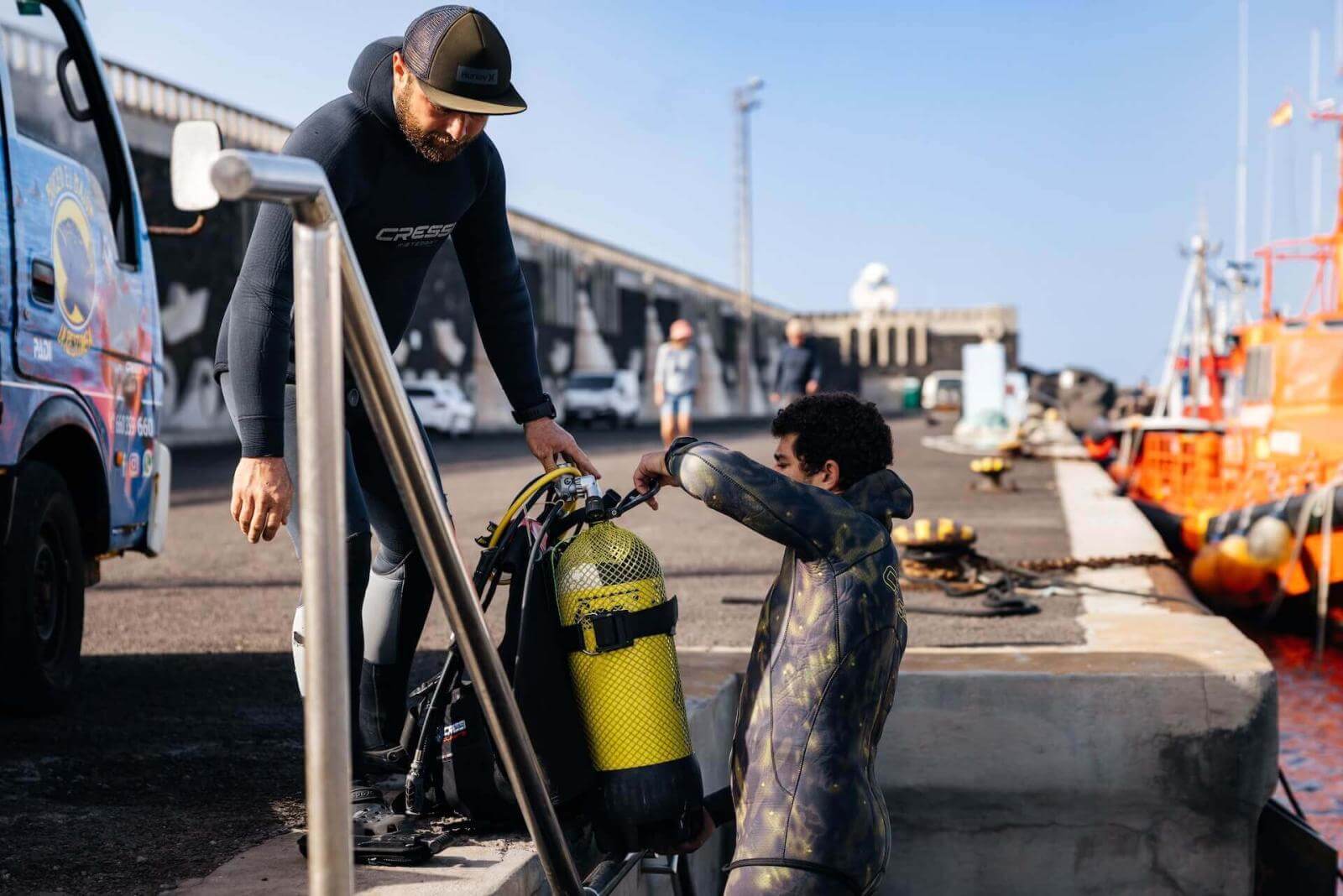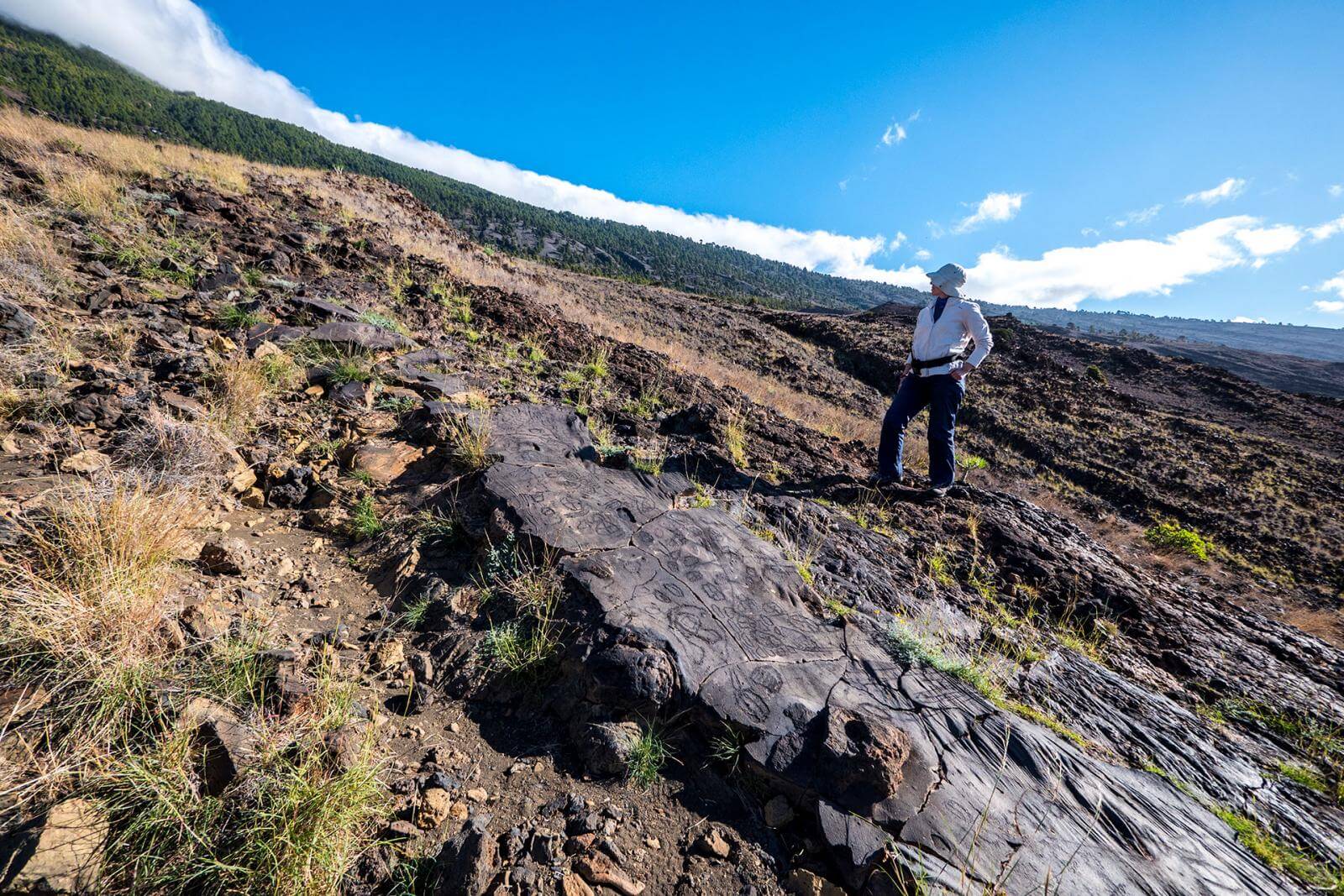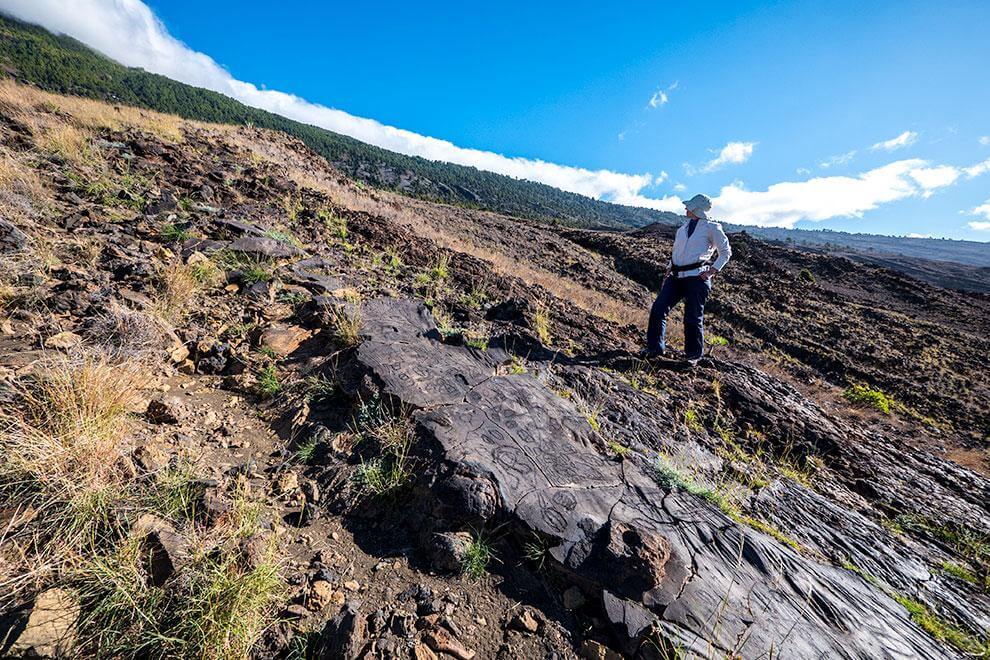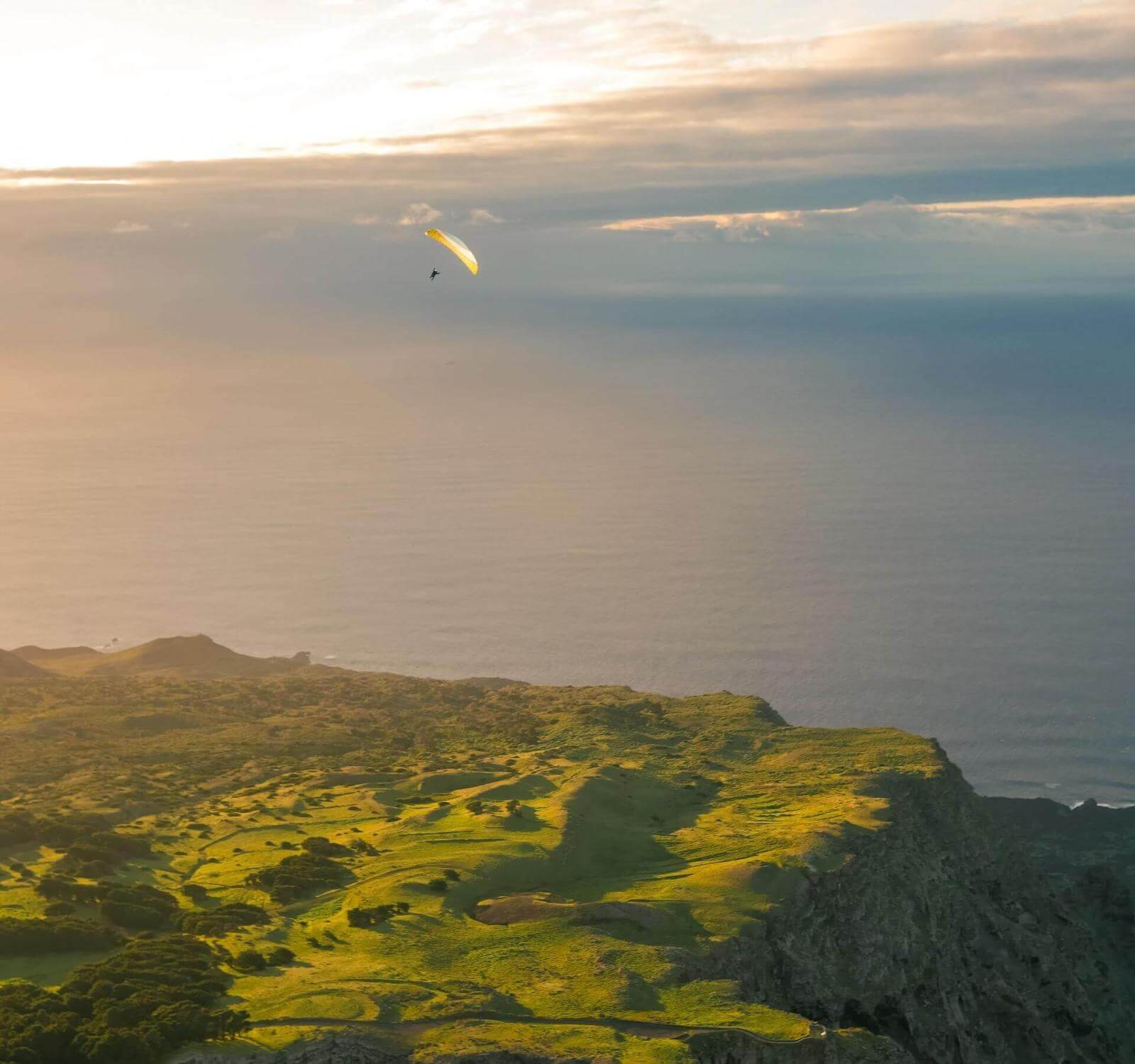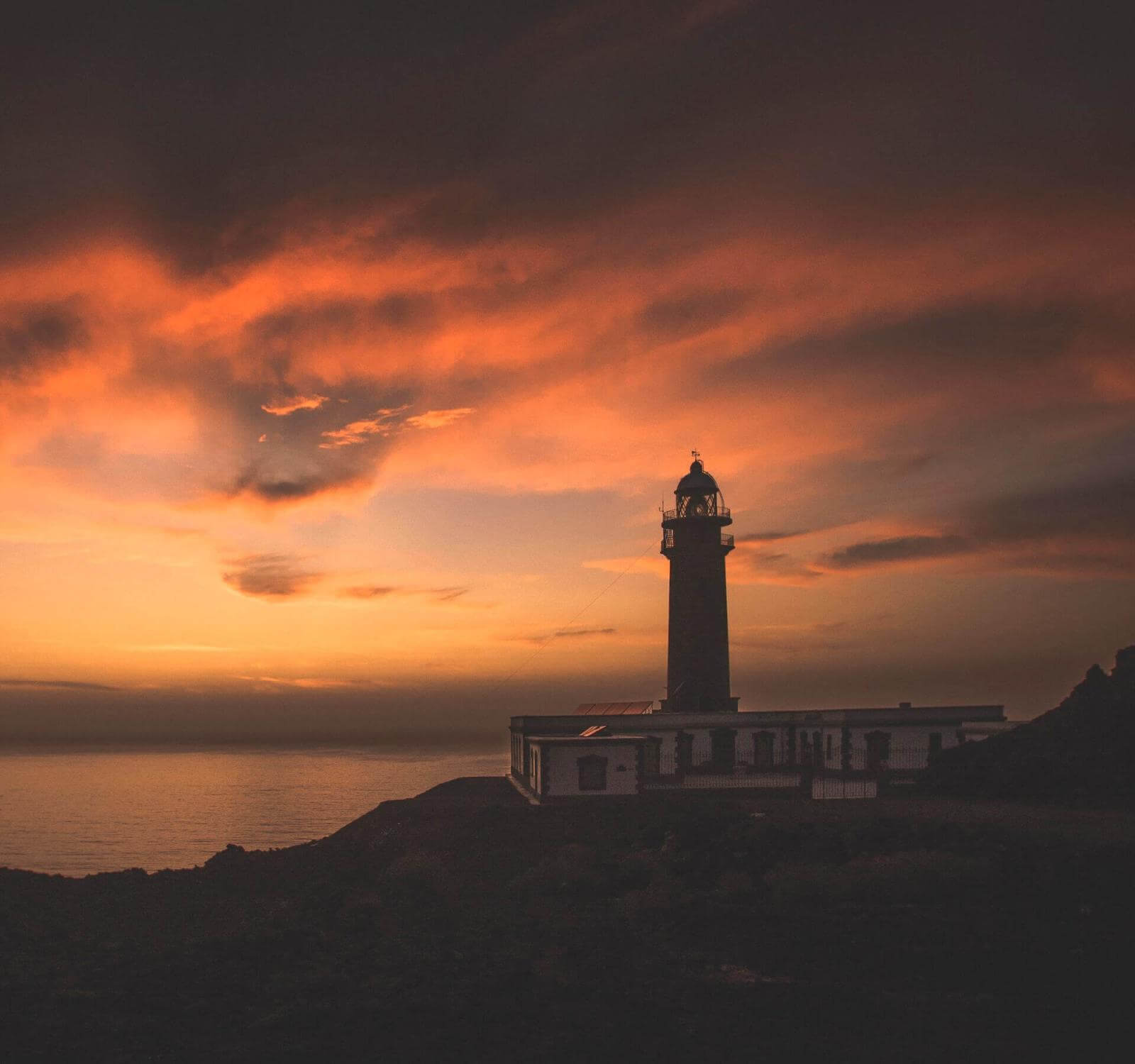The southernmost island in the Canary Islands archipelago contains natural and cultural treasures worthy of longer trips, but because of its size and good network of roads and trails, 72 hours can be enough to immerse oneself in its soul.
A getaway to El Hierro can be so much more than enjoying the year-round pleasant temperatures that envelop the Canary Islands. The island’s almost 270 square kilometres offer an entire ocean of possibilities, which can make it difficult to choose. Visiting charming villages, hiking, outdoor sports like cycling or paragliding, spectacular seafloors, places steeped in history and gastronomy with its own unique flavour, including sweet and savoury dishes, are just some of the options available on the island in just three days.
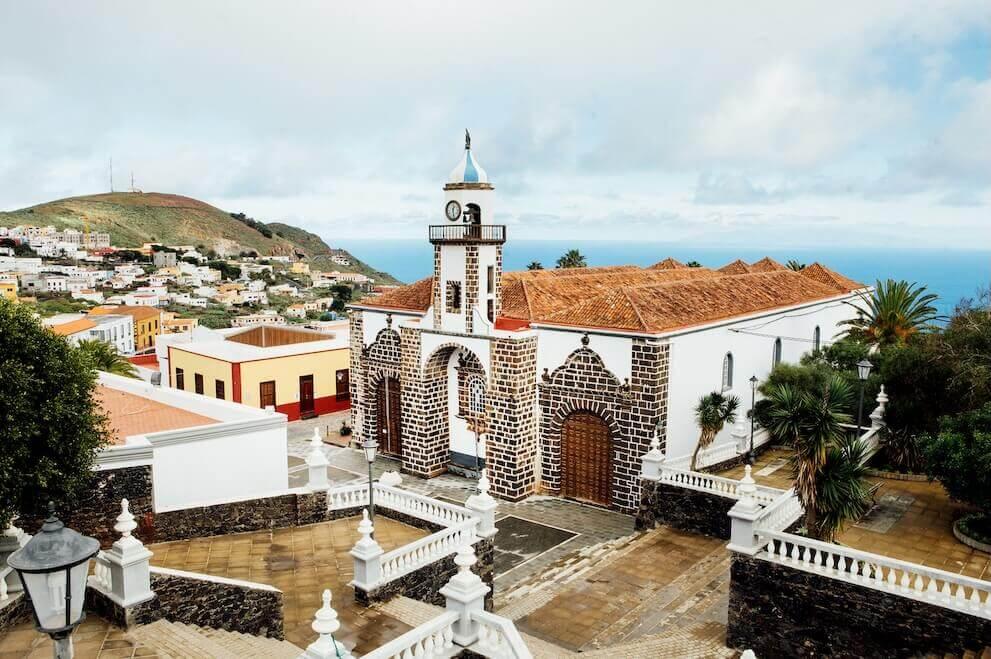
Day one: wander around the north of the island
Just a few minutes from the harbour and the airport we find the town of Valverde, the only Canary Island capital to be located inland. Its cobbled streets are a veritable invitation to immerse oneself in the island’s rich past and discover historical buildings like the Casa de Las Quinielas, which has now been turned into a museum, the old Theatre and the church of Nuestra Señora de la Concepción, which dates back to the 18th century and houses some important artworks.
Time for a dip. Very near the town there are several natural swimming pools, one of the jewels of El Hierro. In the far north are Charco Manso and Pozo de las Calcosas, while in the north-east we find Tamaduste and La Caleta, two small coastal towns with their own pool where time seems to flow at a different pace. Continuing south along the coast we find Timijiraque, a haven of peace in the form of a large beach of black sand, very popular with locals and surfers.
Continuing west now, Isora appears, a small hamlet with plenty of magnetic charm. Its rustic volcanic stone walls contrast with the colour of façades and fruit orchards. A perfect place for resting for the night or simply deciding on your next stop, because the surrounding area contains the Natural Monument of Las Playas, two viewpoints for enjoying from on high, a demanding trail circuit and one of the most beautiful and accessible hiking routes on the island, the La Llanía Route. A light walk that can be rounded off with a visit to the Garoé, the sacred tree of El Hierro.
You cannot end your first day on El Hierro without trying one of the island’s most characteristic flavours: that of its cheeses. The northern area has different cheese dairies and establishments where one can try this product either under the official name, herreño cheese, or in its sweet version, quesadilla, a kind of forerunner of the famous cheesecake which has been made on the island for decades.
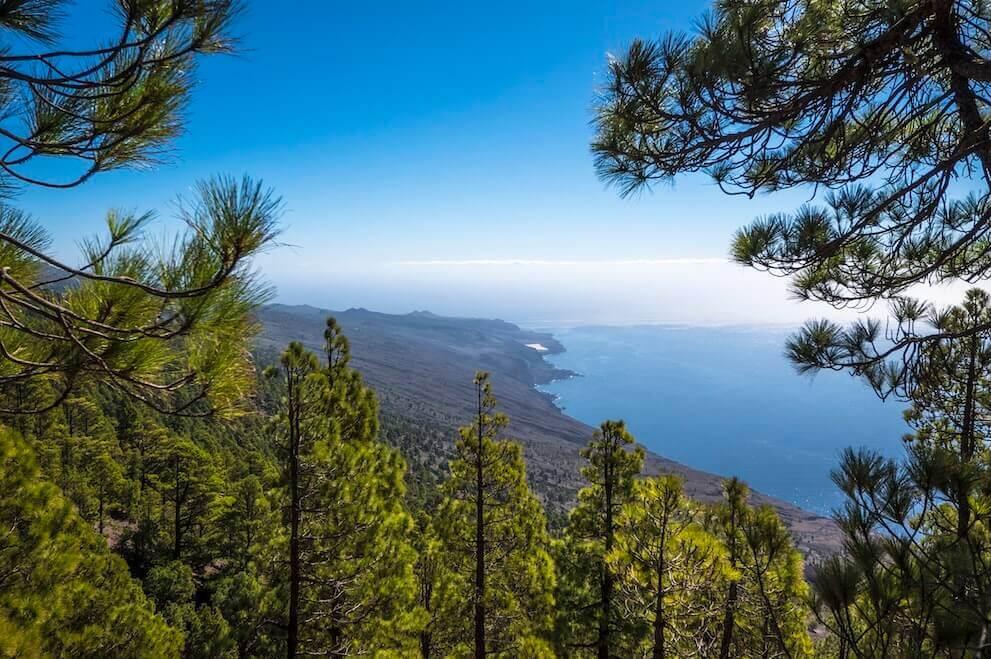
Day two: plunging into the secrets of the south
The south of the island contains stunning nature. The forests are an excellent option for walking or practising outdoor sports. Proof of this is the fact that the trails here are the venue for one of the most famous mountain bike championships in the archipelago. There are several different signposted routes suitable for all types of walkers and trail runners. In addition, the highest areas are chosen for calmly practising paragliding, because the winds in this area guarantee the most peaceful of flights.
But this is only half of what the south of the island has to offer. The coast here is bathed by the Mar de Las Calmas, a marine reserve covering nearly 10,000 hectares and teeming with life. One of the best places for enjoying these waters is Tacorón, a tranquil cove with red and black sand that holds pleasant surprises for anyone visiting with diving goggles. To round off the bathing experience, a small path leads visitors to an area of natural swimming pools, perfect for families and friends.
In the far south we find La Restinga, an essential place for understanding the spirit of El Hierro. This tiny fishing village is known throughout the archipelago for the quality of its fish dishes but is famous the world over as an authentic capital of aquatic activities. It is the perfect place for jumping on a board or taking a boat out to watch whales and dolphins in the wild in a safe, respectful manner. But above all, in La Restinga you can feel the passion for diving. Around the village there are over ten diving points and a whole ocean of experiences for all levels: night dives, exploring caves, underwater photography, introductory dives…
If it is a more cultural day out you are looking for, this part of the island is home to the Geopark Interpretation Centre, a place where you can discover the island’s volcanic past and present from up close. A little further east, among forests, lies the Cultural Park of El Julan, an open-air museum focusing on the first inhabitants of the island, the Bimbaches, whose messages are still written today on the stones here, and can be visited in the company of a local tour guide.
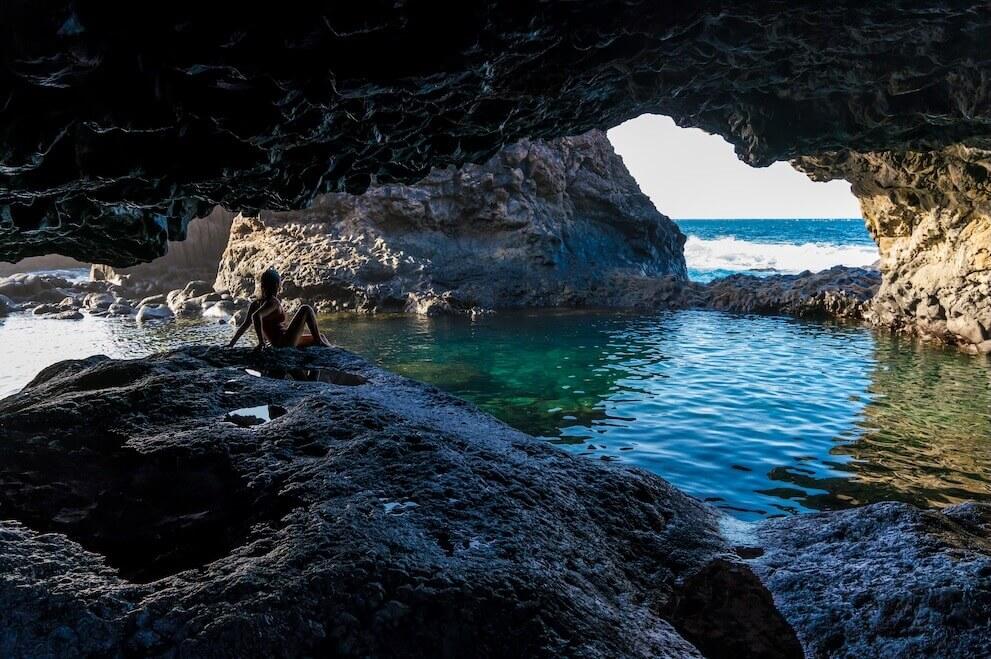
Day three: exploring the western side to the ancient end of the world
This area gives visitors the chance to choose between the sea and the mountains. Along the coast you will come across some of the island’s best beaches and natural swimming pools: La Maceta, Charco de los Sargos, and finally, Charco Azul, an unforgettable place where you can gaze at the stars at night. Inland the experience is quite different, penetrating the natural spirit of the island. The first stop is the Guinea Ecomuseum, the perfect place for finding out how the first inhabitants of the island lived and meeting some other, very special inhabitants: the giant lizards of El Hierro. Further on we find Tigaday, the main population centre on this side of the island, and the hamlet of Los Llanillos, a picturesque little village with a traditional feel full of beautiful gardens.
From this point on the scenery in El Hierro changes completely, revealing its volcanic spirit. The two paths join up again in the remote village of Sabinosa, a little corner steeped in charm with plenty to do. Taste the wines, walk on one of the numerous trails, visit the Pozo de la Salud, go paragliding or enter magical places like the Mencáfete Integral Nature Reserve or El Sabinar, a unique forest sculpted by the wind.
There is probably no better way of ending the day than by watching the sun go down, and every evening Punta de Orchilla offers a picture-postcard sunset. This is the westernmost tip of Spain, and for centuries was thought to be the end of the world. A place full of history and at the same time silent, which at night turns into an excellent stargazing viewpoint.
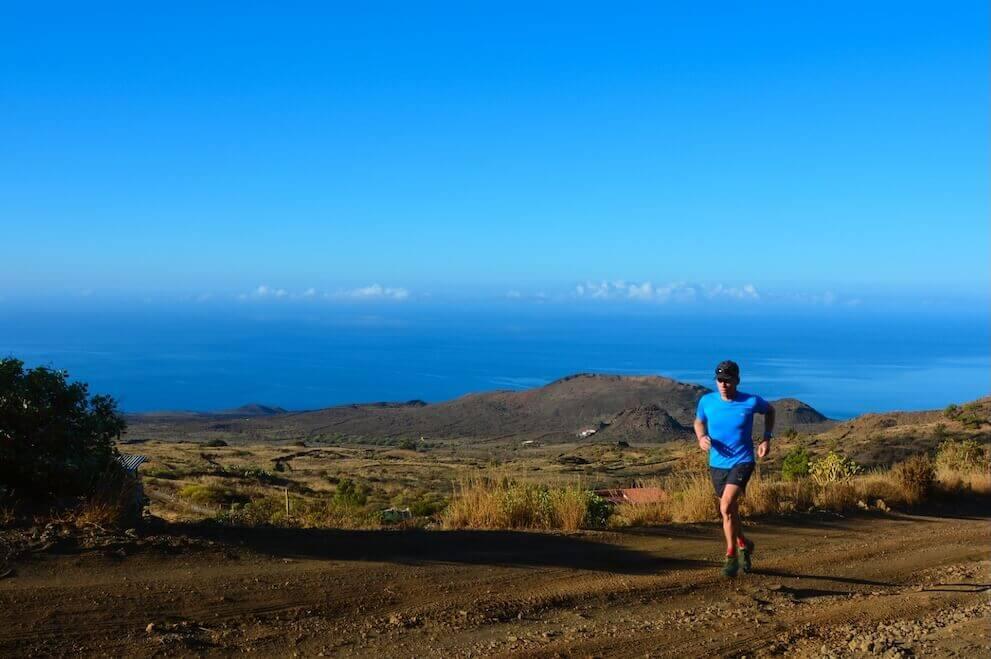
A little sport every day
There are many forms of discovering and relishing El Hierro, but one of the most enjoyable ways is through sport. If you are so inclined, this Biosphere Reserve can become a huge open-air gym with space for all types of sports and activities such as orientation, hiking or open water swimming. The island’s volcanic past also plays a fundamental role, as it is the author of a rugged terrain, perfect for going trail running, mountain biking and of course, climbing, which can be practised in spectacular coastal areas.


